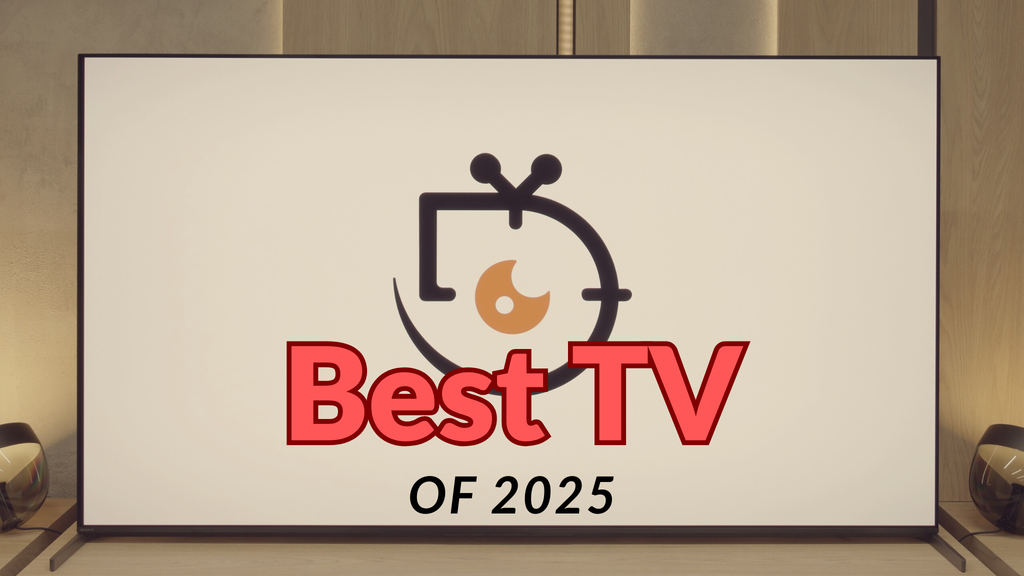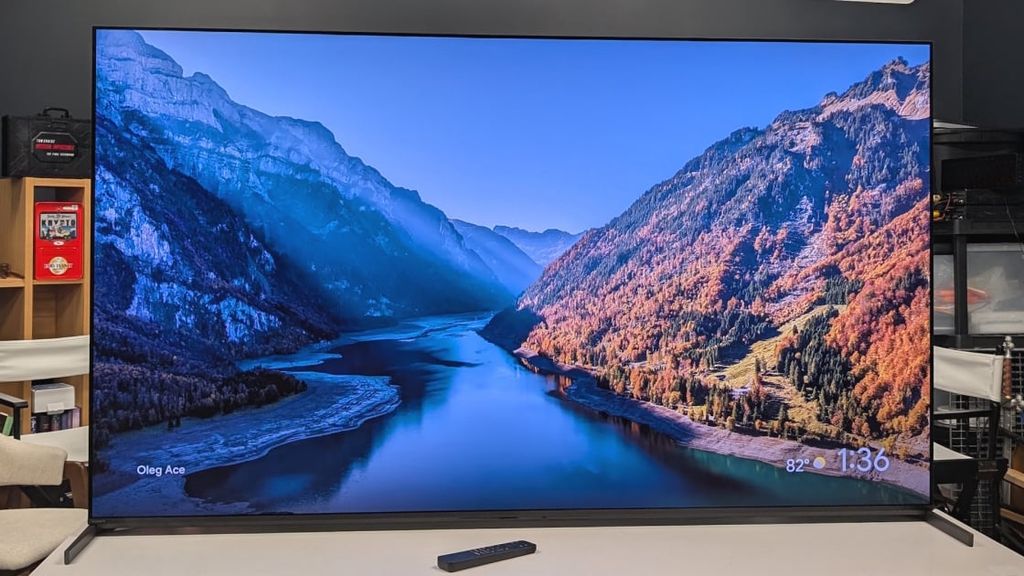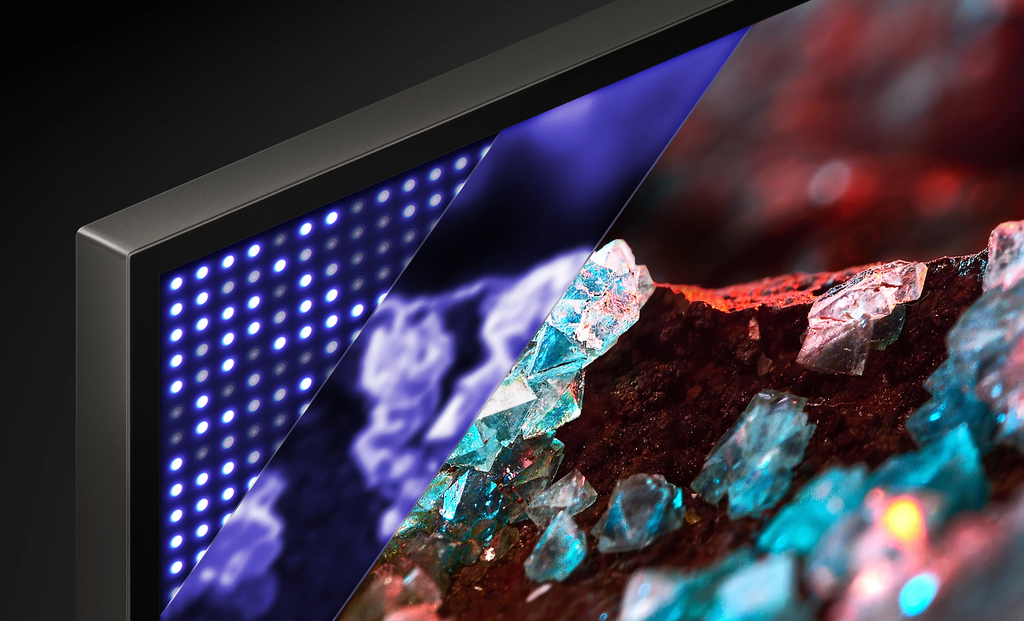- Matching (Score)
- Our verdict
- Competing TVs
- TV appearance
- Where to buy
- Contrast and black detail
- HDR effect quality
- Factory color reproduction
- Color reproduction after calibration
- Smoothness of tonal transitions
- Image scaling and smoothness of tonal transitions
- Blur and motion smoothness
- Console compatibility and gaming features
- Input lag
- Compatibility with PC
- Viewing angles
- Daytime performance
- TV features
- Apps
- Playing files from USB
- Sound
- Panel details
Sony Bravia 8 MK2 Review
Bravia 8 II / XR8M
Available screen sizes:
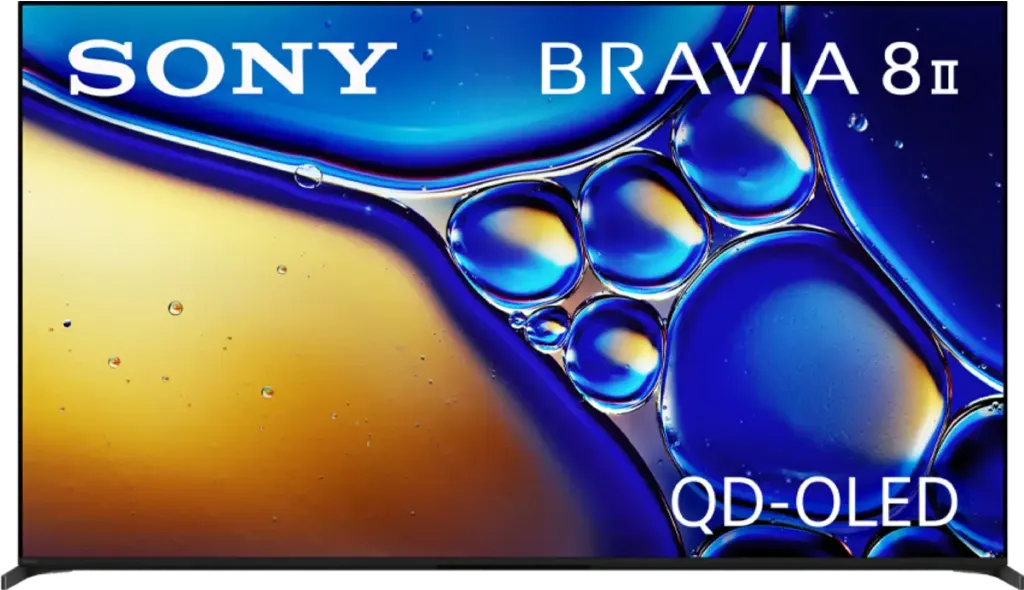
Complete the survey to find out the result
Panel type: QD-OLED Refresh rate: 120Hz Brand: SONY Resolution: 3840x2160 System: Google TV Model year: 2025
When in 2023 Sony released the model A95L, the world of televisions spoke of an almost perfect design – a device that could combine cinematic image quality with modern features. It is no surprise that expectations for its successor were enormous. The Sony Bravia 8 II (Mk2) is a direct heir to this legend, intended to take over the crown left by its older cousin. The manufacturer has opted for a next-generation 120 Hz QD-OLED panel, an innovative XR image processor, and refined features for gamers and movie enthusiasts. From the very first moments, it is clear that this is not just a cosmetic update, but an attempt to maintain a position among the best televisions of 2025. How does the new Sony Bravia 8 II perform? We invite you to the review!
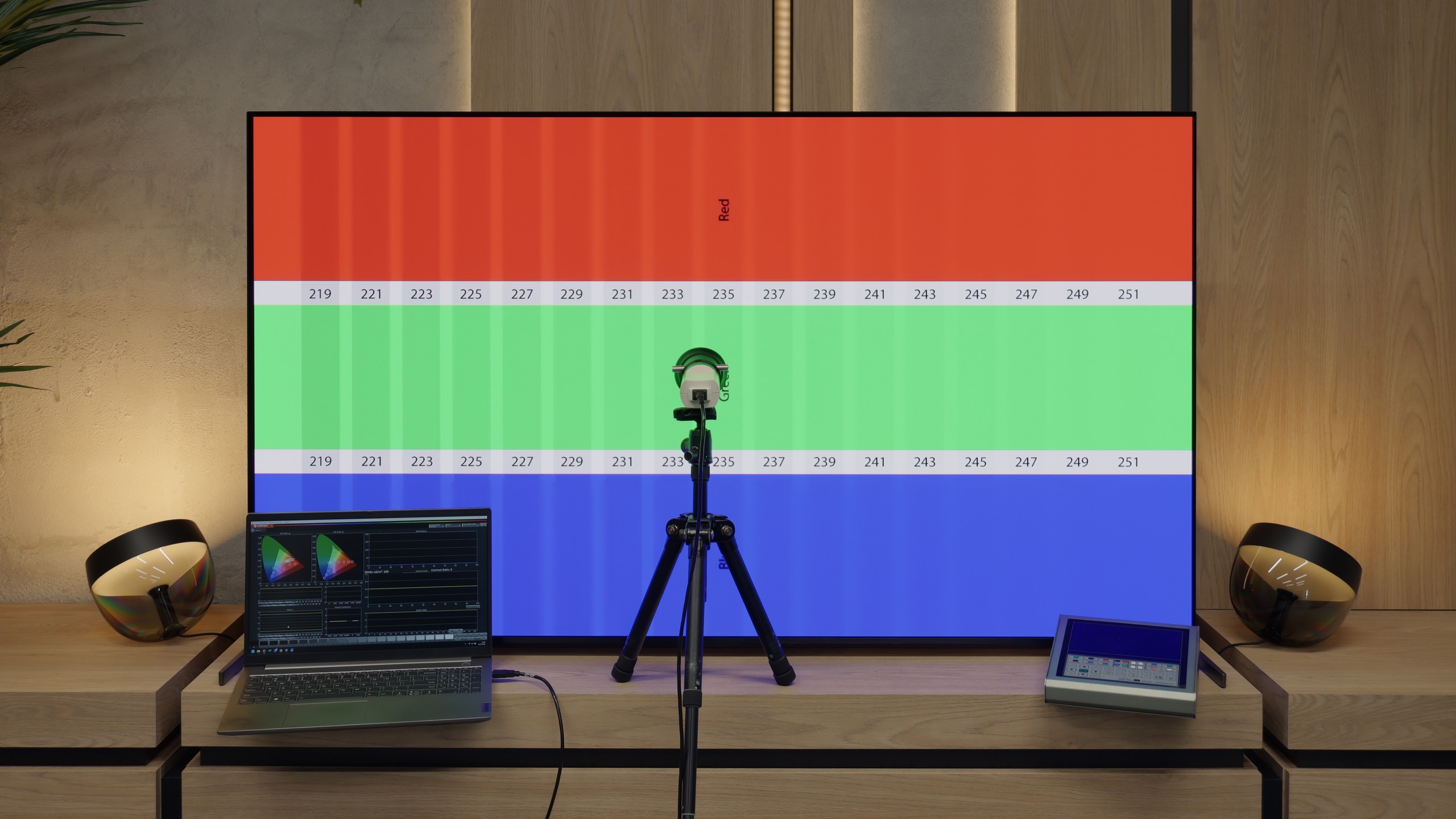
SONY Bravia 8 II - Our verdict
8.5
Overall rating
Sony Bravia 8 II is undoubtedly a worthy successor to the A95L – refined, incredibly versatile, and with several noticeable improvements over its predecessor. The quality of image, sound, and overall user experience position this model among the top premium TVs of 2025. It’s a device that can enchant both movie enthusiasts and demanding gamers. Among its greatest assets is the almost perfect image, where the XR processor subtly yet effectively enhances detail and smoothness, without overdoing interference with the source material. Additionally, there’s the phenomenal Acoustic Surface sound, creating the impression that dialogues and effects come directly from the screen. Google TV operates very smoothly, offering a vast selection of apps, while extra features – like the ability to game in the cloud on PlayStation or access Bravia Core – increase the device's value. It also boasts low input lag, variable refresh rate, and full support for modern HDR formats.
Despite this, in this barrel of honey, there are a few drops of tar. The lack of refresh rates above 120 Hz, only two HDMI 2.1 ports, and average daytime performance are drawbacks that shouldn't be present in a TV of this class in 2025. Although for many these might not be deal-breaking flaws, in the super premium segment, competition is becoming increasingly strong and uncompromising. Will these shortcomings make it harder for Bravia 8 II to compete for customers' wallets? That we leave to your judgment, the market... and sales results. Regardless, Bravia 8 II is a phenomenal product that would definitely be hard to not recommend.
Advantages
Amazing Contrast and Black
High brightness in HDR content
Great motion fluidity: QD-OLED 120Hz panel
Many features for gamers: VRR, ALLM, HGIG, GameBar
Top-quality digital image processing (XR Processor)
A multitude of apps on GoogleTV
Two remotes included
Phenomenal sound with DTS and Dolby Atmos support
Disadvantages
Only Two HDMI 2.1 Ports: One of the HDMI 2.1 ports is used for eARC (Soundbar)
Cherry black effect in bright light: The QD-OLED panel causes blacks in bright light to lose their depth
Average brightness in SDR mode (competition at this price can do a lot more)
Missing additional smoothness modes for PC gamers
Movies and series in UHD quality
9.1
Classic TV, YouTube
9.4
Sports broadcasts (TV and apps)
9.0
Gaming on console
9.3
TV as a computer monitor
7.6
Watching in bright light
5.6
Utility functions
8.9
Apps
9.6
Sound quality
8.5
Complete the survey to find out what fits your preferences
SONY Bravia 8 II - Competing TVs in this price range
SONY Bravia 8 II - TV appearance
HDMI inputs: 2 x HDMI 2.0, 2 x HDMI 2.1 (48Gbps) Outputs: Toslink (Optical audio), eARC (HDMI), ARC (HDMI) Network Interfaces: Wi-Fi 2.4GHz, Wi-Fi 5GHz, Ethernet (LAN) 100Mbps
Build quality: Premium
Stand type: Legs
Bezel color: Graphite
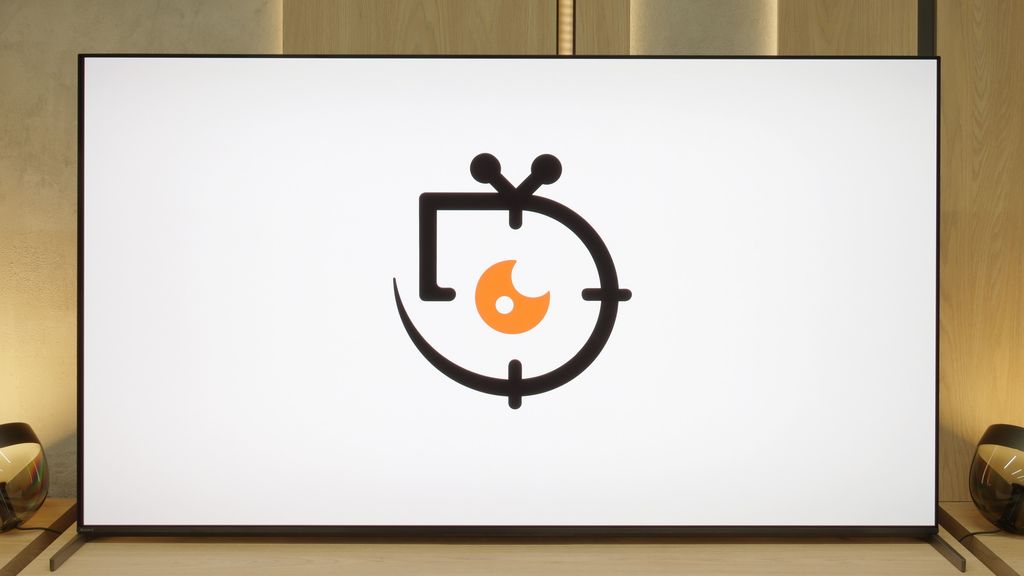
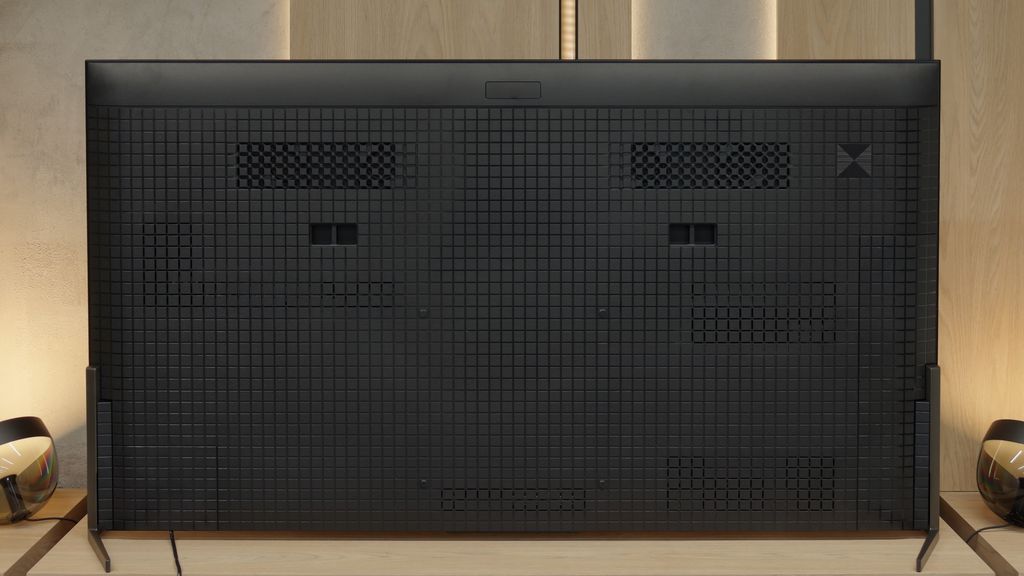

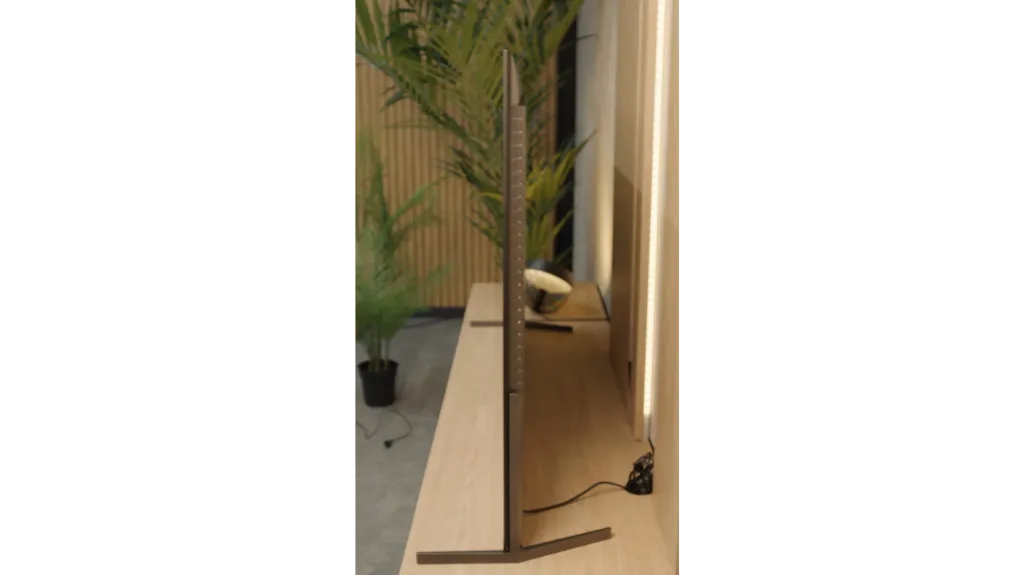
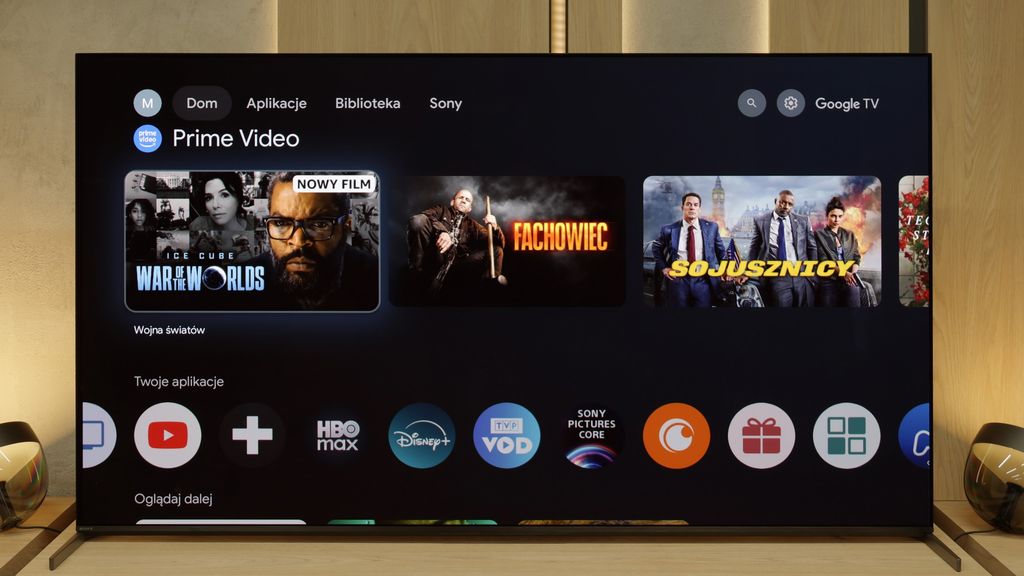

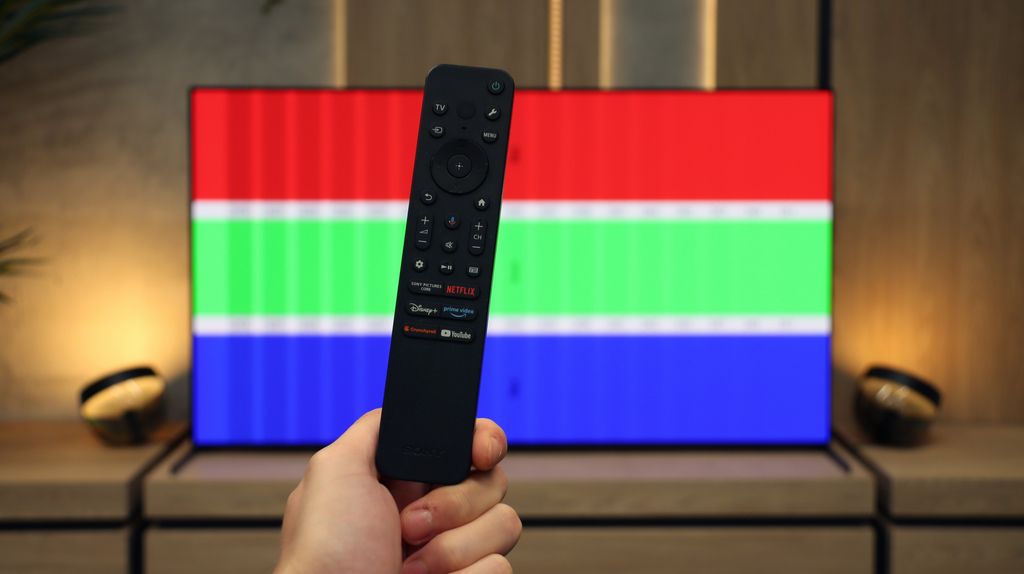
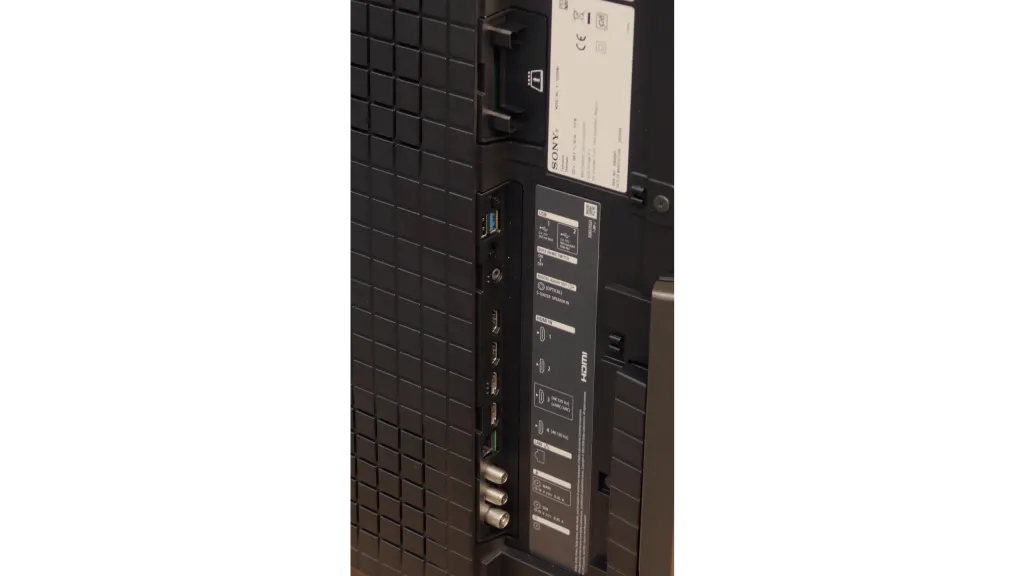
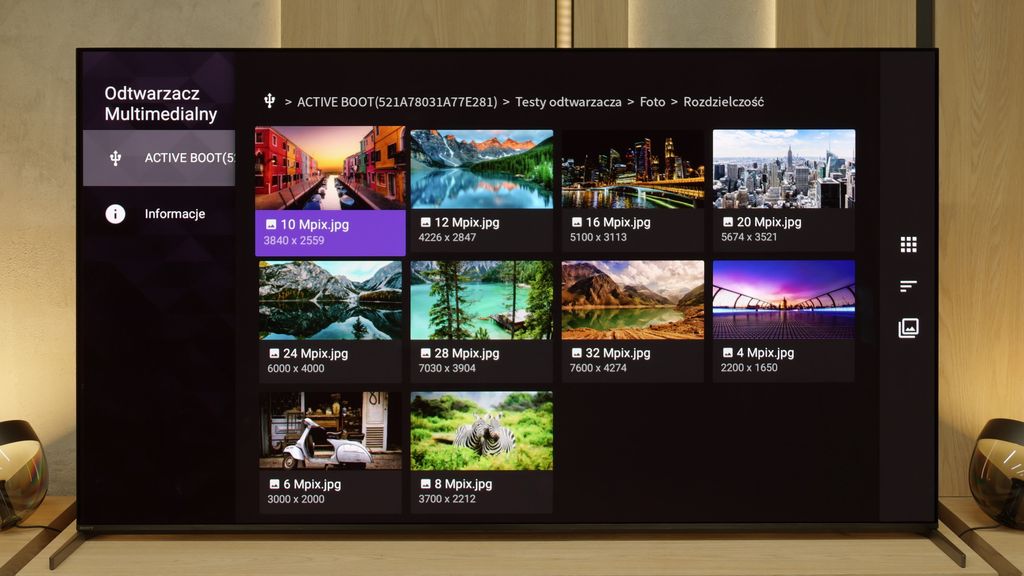
Stand: Height adjustment
Flat design: Yes
Accessories: Two remote controls, Stand
The Sony Bravia 8 II, at first glance, gives the impression of premium-class equipment, and it is clear that stylistically it refers to the legend that was the A95L model. The design may not be as extremely slim as that of competitors like the Samsung S95F or LG G5, but there is a practical justification for this – according to the manufacturer, the additional thickness conceals a cooling panel, which is meant to impact the durability and performance of the display. The design itself remains true to what Sony has accustomed us to over the years – it is elegant, minimalist, and not overly complicated. In the package, we receive sturdy, stylish legs, which although can no longer be mounted centrally (as in the predecessor), fortunately retain the height adjustment option to accommodate a soundbar. The only element that may raise some objections is the rear casing made of plastic. However, Sony explains that it has its specific structural purpose. Despite this, the Bravia 8 II is a television that can appeal to many and looks great in a modern living room.
Buy at the best price
Select size:
SONY Bravia 8 II - Contrast and black detail
10/10

Result
∞:1

Result
∞:1

Result
∞:1

Result
∞:1

Result
∞:1
Visibility of details in the lights:
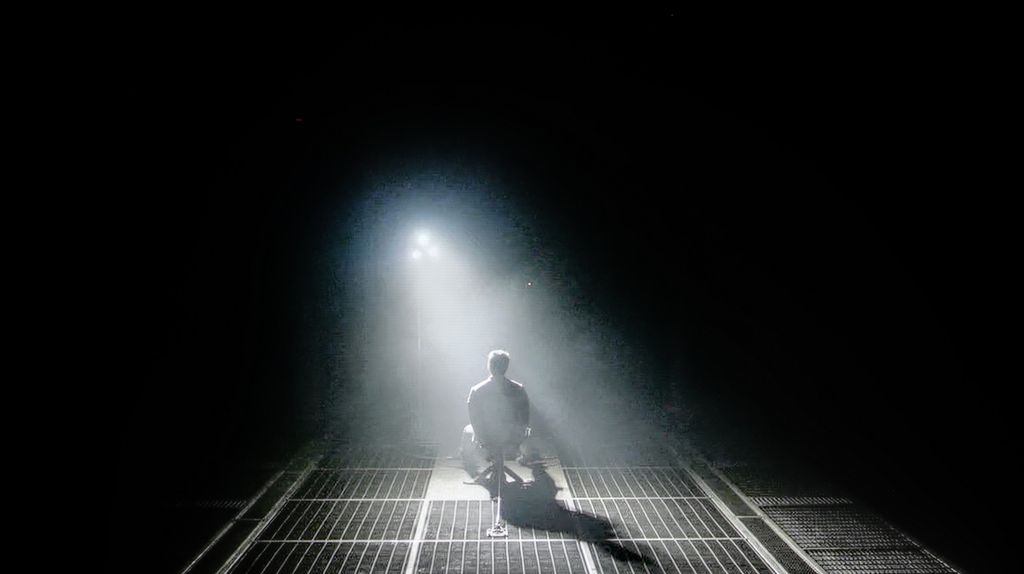
In terms of black levels and contrast, the Sony Bravia 8 II is absolutely top-notch – and this is meant in every sense of the word. We are dealing here with a QD-OLED panel, which naturally offers contrast close to infinity. This means that each pixel can completely turn off, making the black parts of the image truly black, rather than dark gray or navy blue. The effect is particularly impressive in movie conditions when the lights in the room are dimmed – then the image gains real depth and a cinematic quality. The Bravia 8 II also impresses with its light separation in difficult scenes. Test footage from films like Oblivion shows how precisely the television can separate small light sources from the surrounding darkness – without the halo or blurring effect that still occurs in the best LCD televisions (even Bravia 9). Let's add that bright elements maintain full intensity even against absolute black. This not only creates a huge visual impact but also translates into better detail reproduction in high-contrast scenes, which is especially important in HDR content.
Halo effect and black detail visibility:
SONY Bravia 8 II - HDR effect quality
8.4/10
Supported formats: HDR10, Dolby Vision, HLG Color gamut coverage: DCI P3: 99.9%, Bt.2020: 89.3%
Luminance measurements in HDR:

Result
1922 nit

Result
2034 nit

Result
1999 nit

Result
2026 nit

Result
770 nit
Thanks to the new QD-OLED panel, the Sony Bravia 8 II can achieve astronomically high brightness levels of around 2000 nits, translating to nearly reference quality in films and series recorded in HDR format. In test materials such as Life of Pi and Sicario 2, the effect is simply stunning – details in bright parts of the image remain perfectly visible, while night scenes captivate with depth and contrast. However, it's not perfect. Compared to the fiercest competitors, the Bravia 8 II shows a noticeable drop in brightness during full-screen, very bright scenes. When comparing peak luminance to 100% white brightness in HDR mode, the Bravia 8 II is even two or three times dimmer than the LG G5 or Samsung S95F models. This was particularly evident in a scene from the movie The Meg – the screen became noticeably darker than in competing televisions. Despite this drawback, the results of the Bravia 8 II still place it among the very top of the market. It deserves praise for its absolutely top-notch color gamut coverage – DCI-P3 at nearly 100%, and BT.2020 close to 90%. These parameters allow for fully extracting the potential of HDR content and providing a cinematic experience in the comfort of your home.
Scene from the movie “Pan” (about 2800 nits)
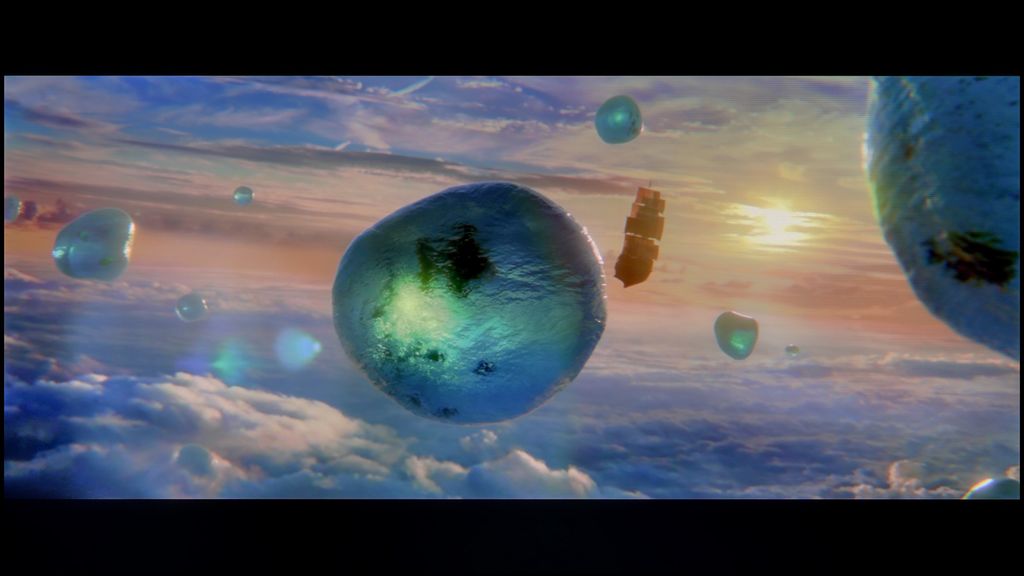
Scene from the movie “Billy Lynn” (about 1100 nits)
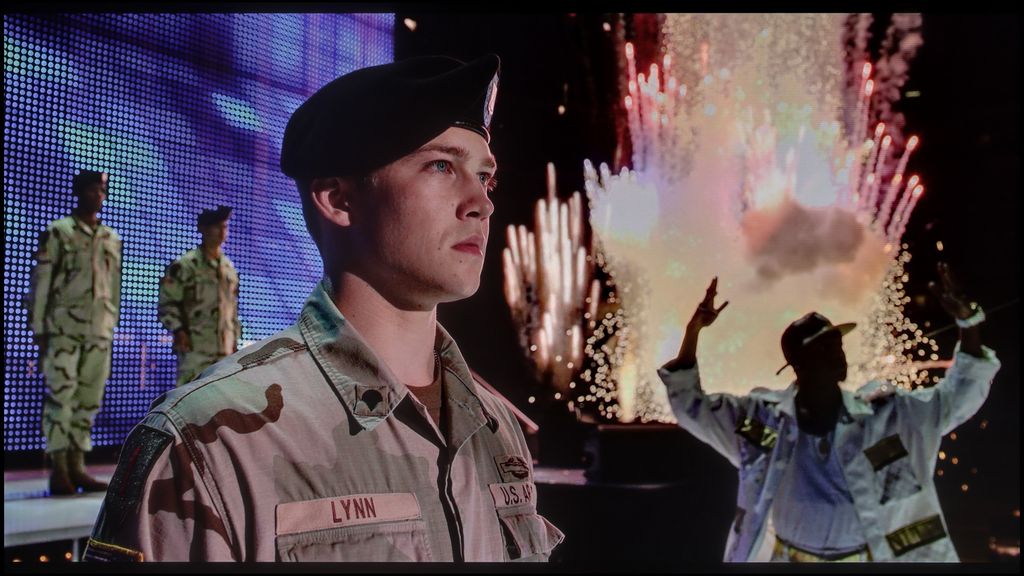
Tests and numbers are one thing, but true value reveals itself only when compared to the best televisions available on the market today. And this is where the greatest strength of the Sony Bravia 8 II lies. Thanks to the excellently factory-adapted dynamic tone mapping feature, the television can reproduce every movie scene in an almost reference quality—both those mastered at around 1000 nits and the demanding ones designed for top displays reaching 4000 nits. Yes, minimal losses in brightness can be seen in the brightest parts of the image, but it is difficult to consider this a significant flaw. The Bravia 8 II is a design created with cinematic perfection in mind—and this is not only visible but also palpable during the viewing experience.
HDR luminance chart:
HDR luminance
If someone still thinks that the dynamic tone mapping function alone is not enough, fear not – most contemporary film productions are created in a format with dynamic metadata. In the case of the Sony Bravia 8 II, this is Dolby Vision, which can fully harness the potential of the QD-OLED panel. As seen in the comparison photo, dynamic metadata makes a huge difference, especially in the most challenging bright scenes, where the television demonstrates the full extent of its capabilities and retains details that no display on the market can manage without them.
Static HDR10

Dynamic: Dolby Vision

Factory color reproduction
8/10
Right out of the box, the Bravia 8 II performs really well. In the best IMAX® Enhanced mode, the television can reproduce colors in a pleasing and natural way, although “good” here does not mean “best in class.” The white balance definitely needs adjustment – skin tones tend to lean into slightly pink/cool hues, both in SDR and HDR materials. We also noticed that the EOTF curve characteristics show a tendency to brighten the darkest parts of the image. This is probably due to the manufacturer's desire to highlight as many details as possible, even in deep shadows. Is this a good approach? It's hard to say definitively, but we know one thing – it's not an ideal solution.
Color reproduction after calibration
9.2/10
After calibration, the excessive cooling of the image caused by the strong boost of blue color was eliminated. Reds became deeper, and skin tones took on a natural, healthy appearance. Actors who previously seemed "cold" now appear much livelier and more convincing on screen. However, one thing has not changed – the analysis of the EOTF curve still shows that the Bravia 8 II tends to lighten the darkest parts of the image. It's hard to say whether this is a deliberate choice by the manufacturer or a result of the panel design and software. In practice, this means that scenes the creators wanted to leave in deep darkness can reveal more details than intended. Nevertheless, the viewing experience after calibration is clearly better – warm, natural colors and realistic skin tones make watching on the Bravia 8 II simply more pleasant to the eye.
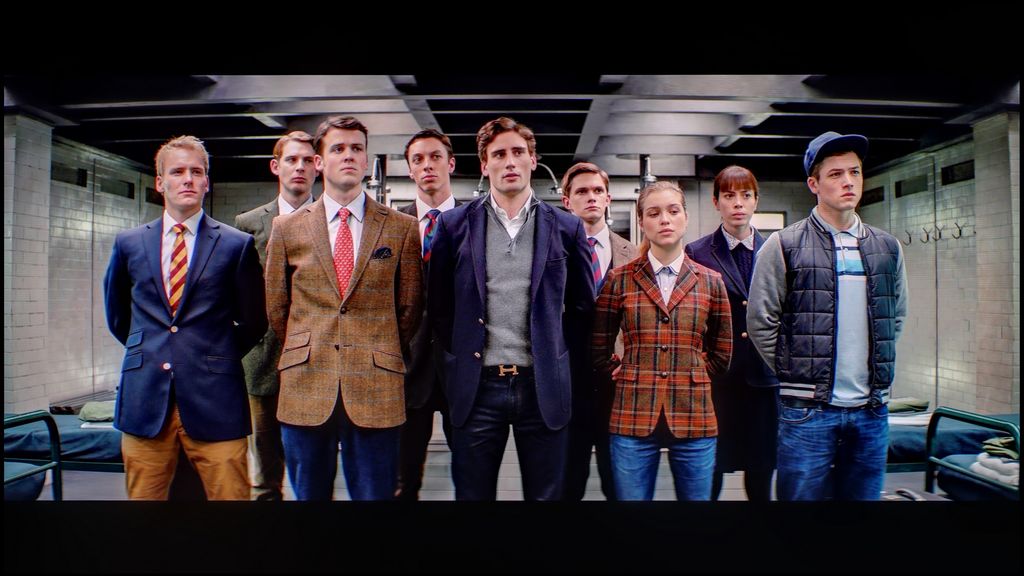
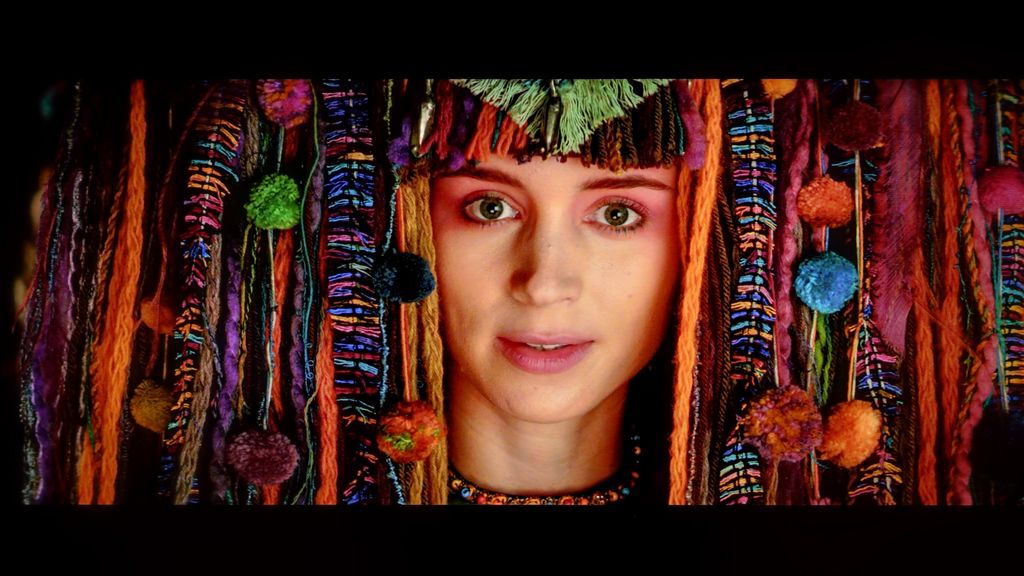
SONY Bravia 8 II - Smoothness of tonal transitions
8.5/10
The fluidity of tonal transitions in the Sony Bravia 8 II can be described as very good, although with a clear distinction between light and dark materials. In high luminance scenes, the television performs almost exemplary – the gradation is smooth, free from visible bands or artifacts, and subtle color transitions maintain full consistency. This is particularly evident in HDR materials, where a bright sky or illuminated frames look almost perfect – here the assessment could easily be 9.5/10.
The situation is somewhat different in darker sequences. In night scenes or heavily shadowed parts, especially in test materials, one can notice slight issues with the fluidity of the gradation – transitions become less subtle. Although this is not a level that ruins the viewing experience, a more sensitive eye will catch the difference, especially when compared to absolutely top models on the market. In this category, the rating hovers around 7.5/10.


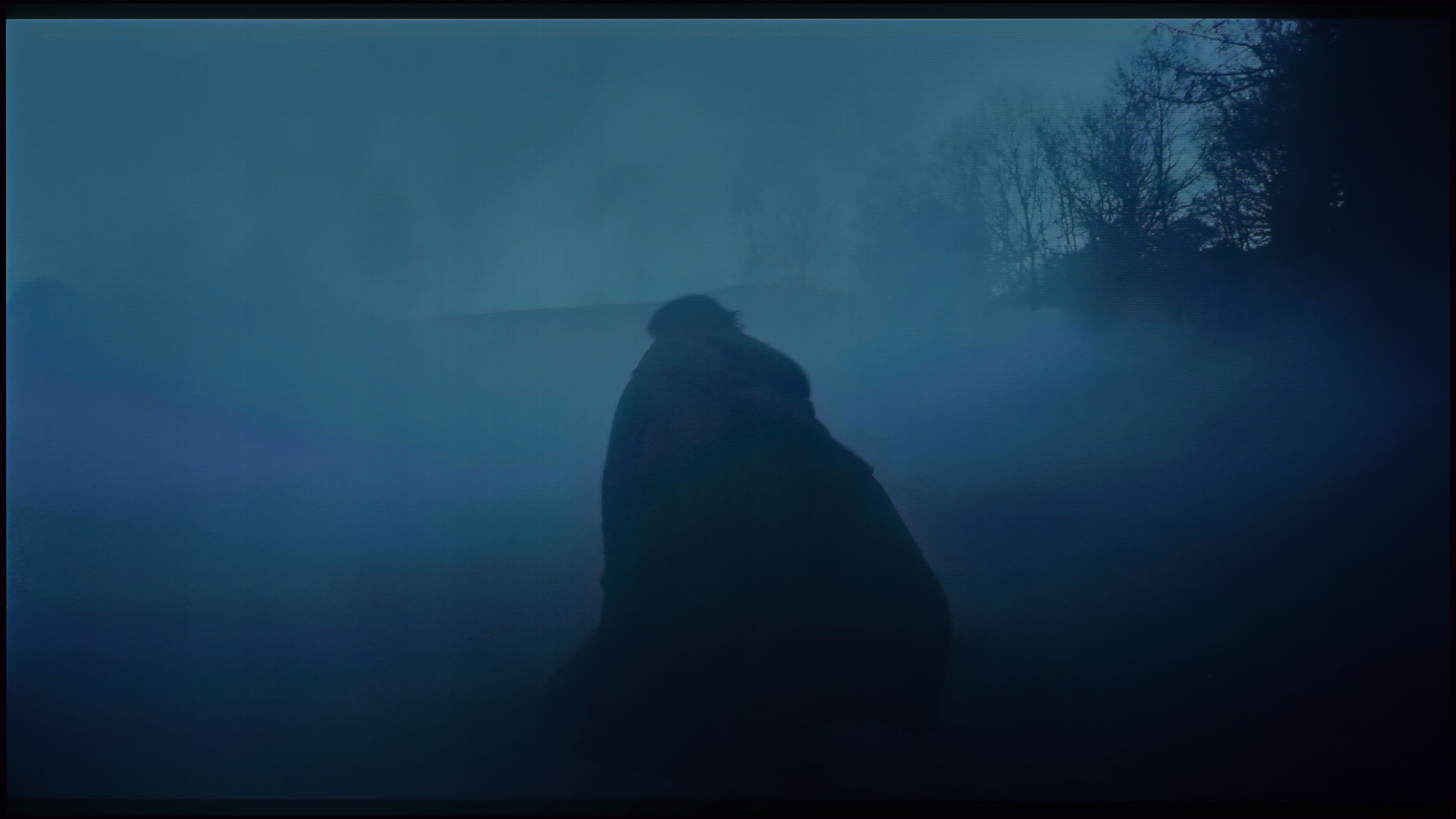





Image scaling and smoothness of tonal transitions
8.5/10
Smooth transition function

Image without overscan on the SD signal

Upscaling and digital image processing are a true showcase of the capabilities of Bravia 8 II. Sony has long been regarded as a master in this field, and here it only confirms its reputation. The proprietary XR processor can extract nearly maximum quality from lower resolution materials—whether it's television or an old DVD movie, the image looks sharper, with more details and better depth. Sure, if we feed it exceptionally low-quality material (like our archival photo with the Model), it won't work miracles, but in everyday viewing, it's hard to find anything to complain about.
The soft gradation feature also performs excellently. In the "Medium" setting, it effectively smooths tonal transitions, eliminating banding on colored and gray gradients, while simultaneously preserving film grain and fine image details. It is this balance between delicacy and effectiveness that keeps Sony TVs among the best on the market in this category.
SONY Bravia 8 II - Blur and motion smoothness
8.5/10
Maximum refresh rate of the panel: 120Hz
Film motion smoothing option: Yes
Blur reduction option: Yes
BFI function 60Hz: Yes, 60Hz (image flickers)
BFI function 120Hz: Yes, 120Hz
Brightness drop with BFI: 49%

Motion smoothness is practically a closed topic in the case of Bravia 8 II. The OLED with 120 Hz refresh rate naturally provides a very clean, clear image in dynamic scenes, so there is little to complain about. However, particular praise is due to one of the best motion smoothing systems on the market. They allow for precise adjustment of film smoothness according to one's preferences – from gentle smoothing to an almost "theatrical" effect – without the risk of artificial jumps, tearing of the image, or annoying artifacts. This is one of those features that will be appreciated both during movie screenings and while watching sports.
Blur (native resolution, maximum refresh rate):

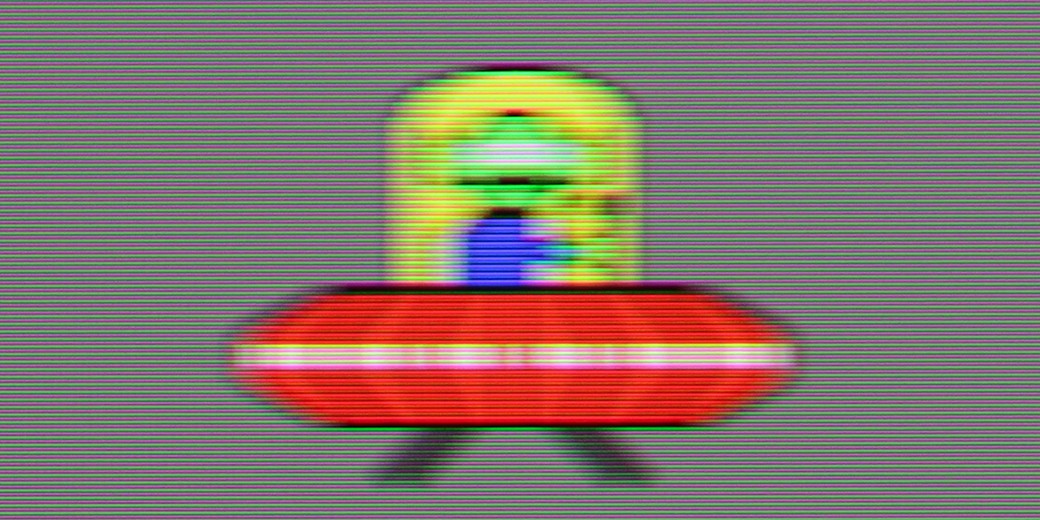
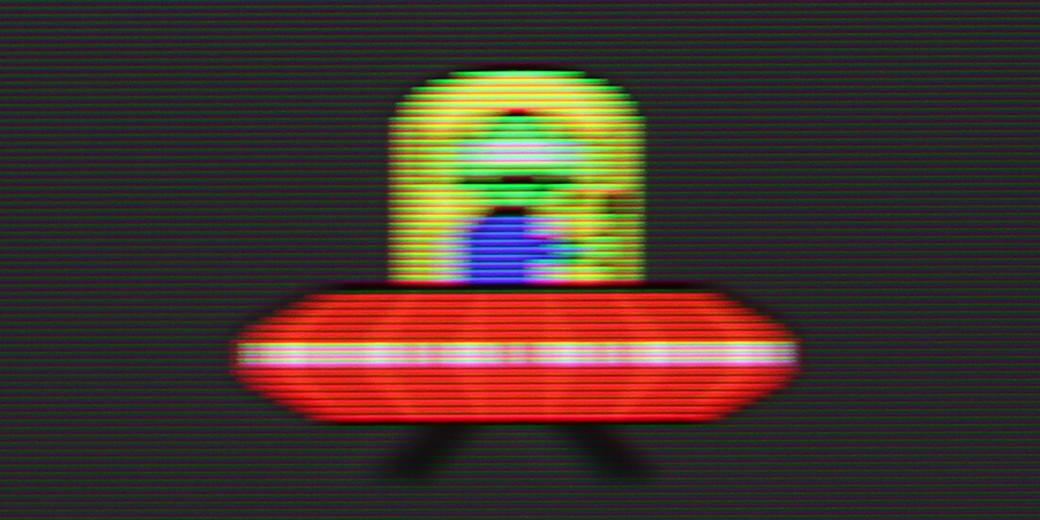
Blur (BFI function enabled):

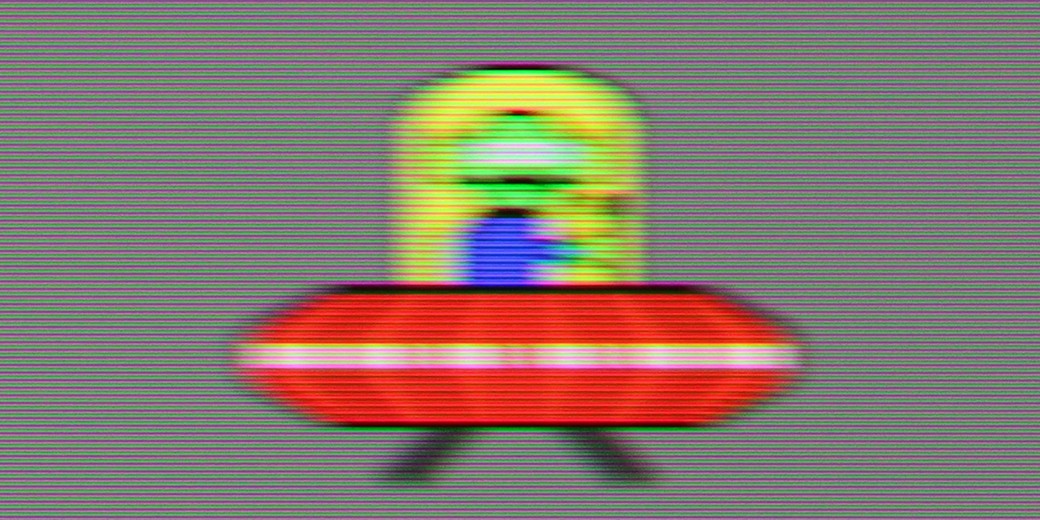

Blur (MotionFlow 120Hz):

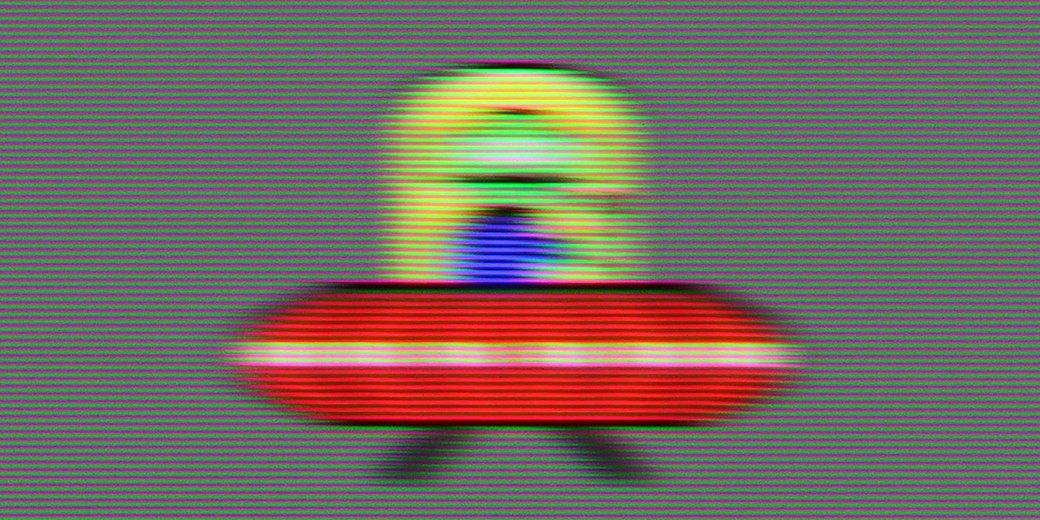
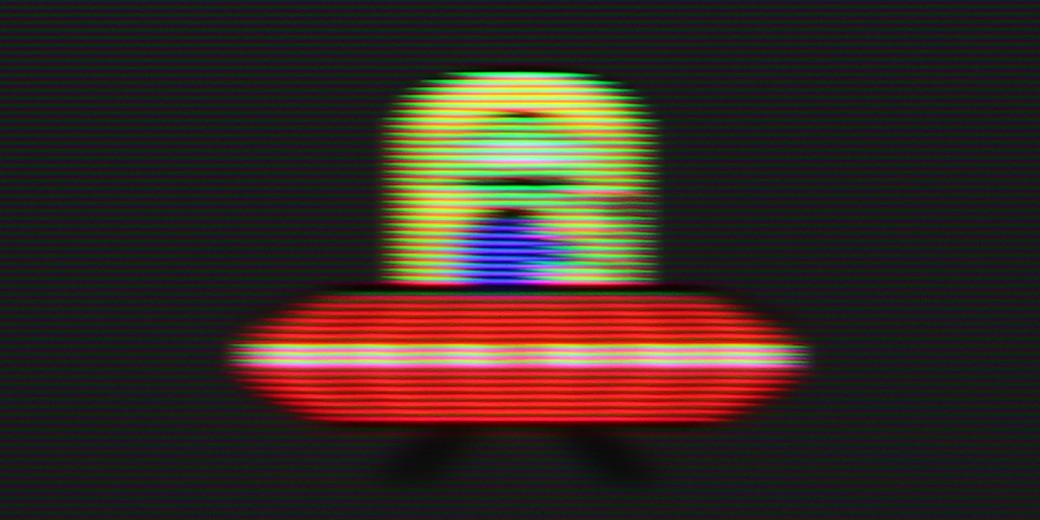
Motion blur in the Bravia 8 II is virtually nonexistent – this is a natural advantage of OLED panels, which have almost zero response time between pixels. Every movement is clear and free of "trails," even in the most dynamic scenes. Interestingly, there is a BFI (described in the menu as "Clarity") feature that is set to "Low" by default. When switched to "High," we did not notice any improvement at either 60 or 120 Hz; instead, the image began to flicker slightly and lost quite a bit of brightness. This option is more for experimenters than for everyday use.
SONY Bravia 8 II - Console compatibility and gaming features
9.4/10
ALLM: Yes
VRR: Yes
VRR range: 48 - 120Hz
Dolby Vision Game Mode: Yes
Correct implementation of HGIG: Yes
1080p@120Hz: Yes
1440p@120Hz: No
4K@120Hz: Yes
Game bar: Yes
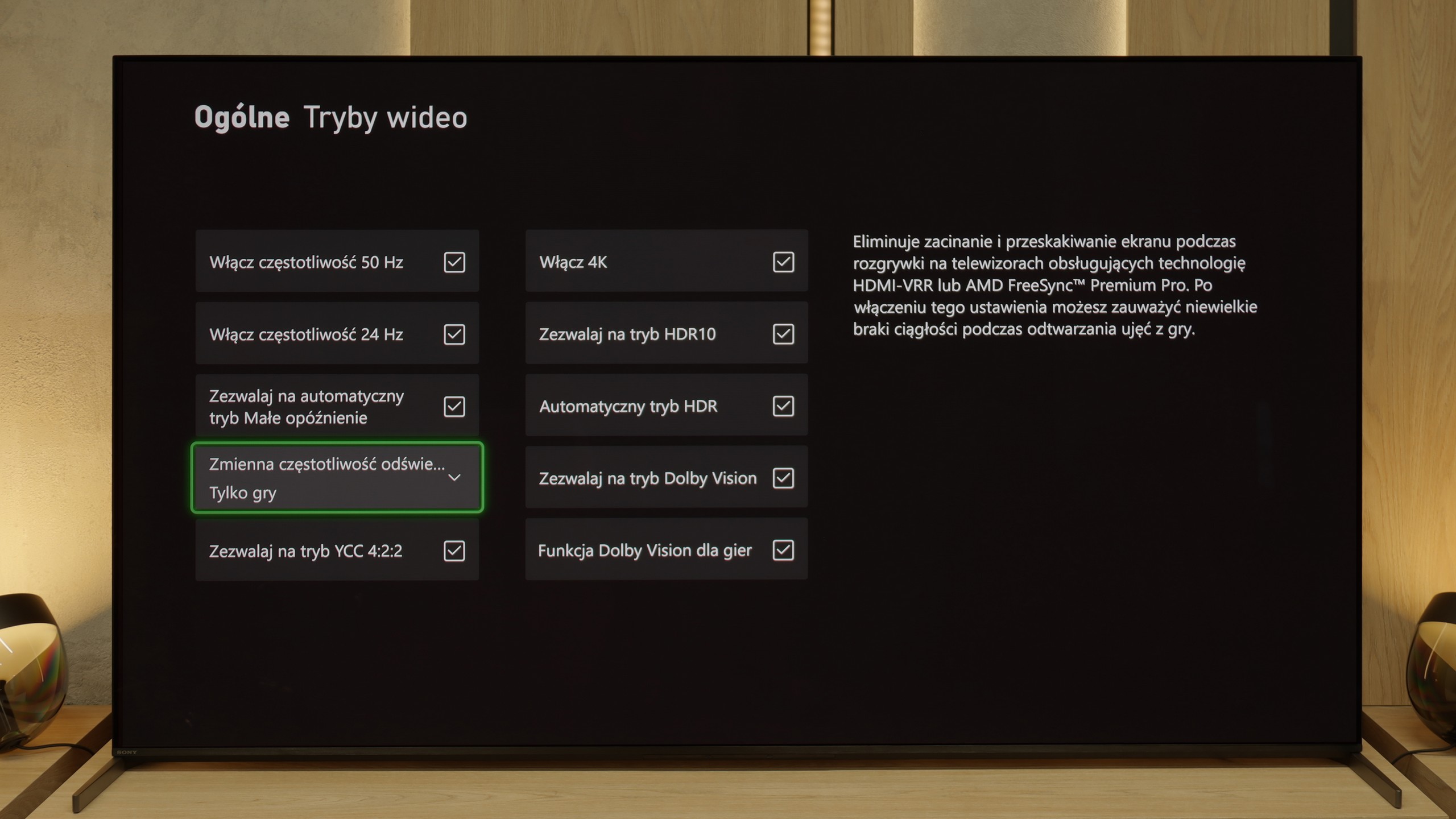

Sony really learned its lesson from previous years and in the Bravia 8 II prepared a package of features for gamers that is difficult to describe as anything other than "almost perfect." We have everything expected in equipment of this class – VRR, ALLM, Dolby Vision Gaming mode, HGiG, and even a convenient Game Bar that allows you to quickly preview parameters and change settings without leaving the game. Additionally, it's worth noting how smoothly and flawlessly these features work – no delays, no strange stutters. You simply turn on the game and everything looks as it should. Unfortunately, there are a few "buts." The manufacturer still gives us only two full-bandwidth HDMI ports, so if someone has a console, a PC, and another device like a Soundbar connected via eARC, it starts a game of cable swapping. It's also surprising that there is no support for 1440p resolution at 120 Hz – particularly important for Xbox gamers. Overall, however – this is one of those TVs that can comfortably be placed in the center of a gaming lounge, allowing you to enjoy gameplay without significant compromises.
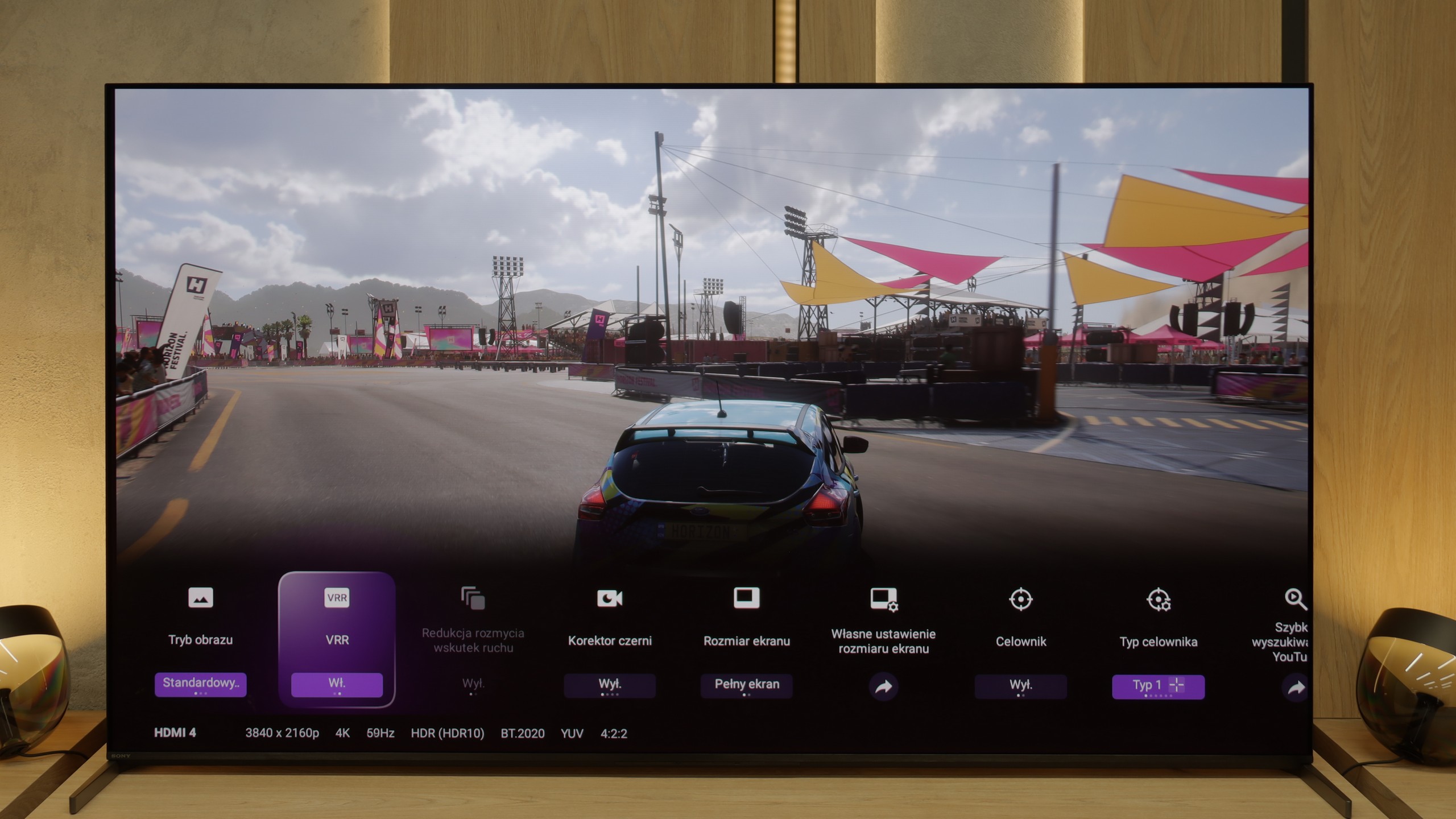
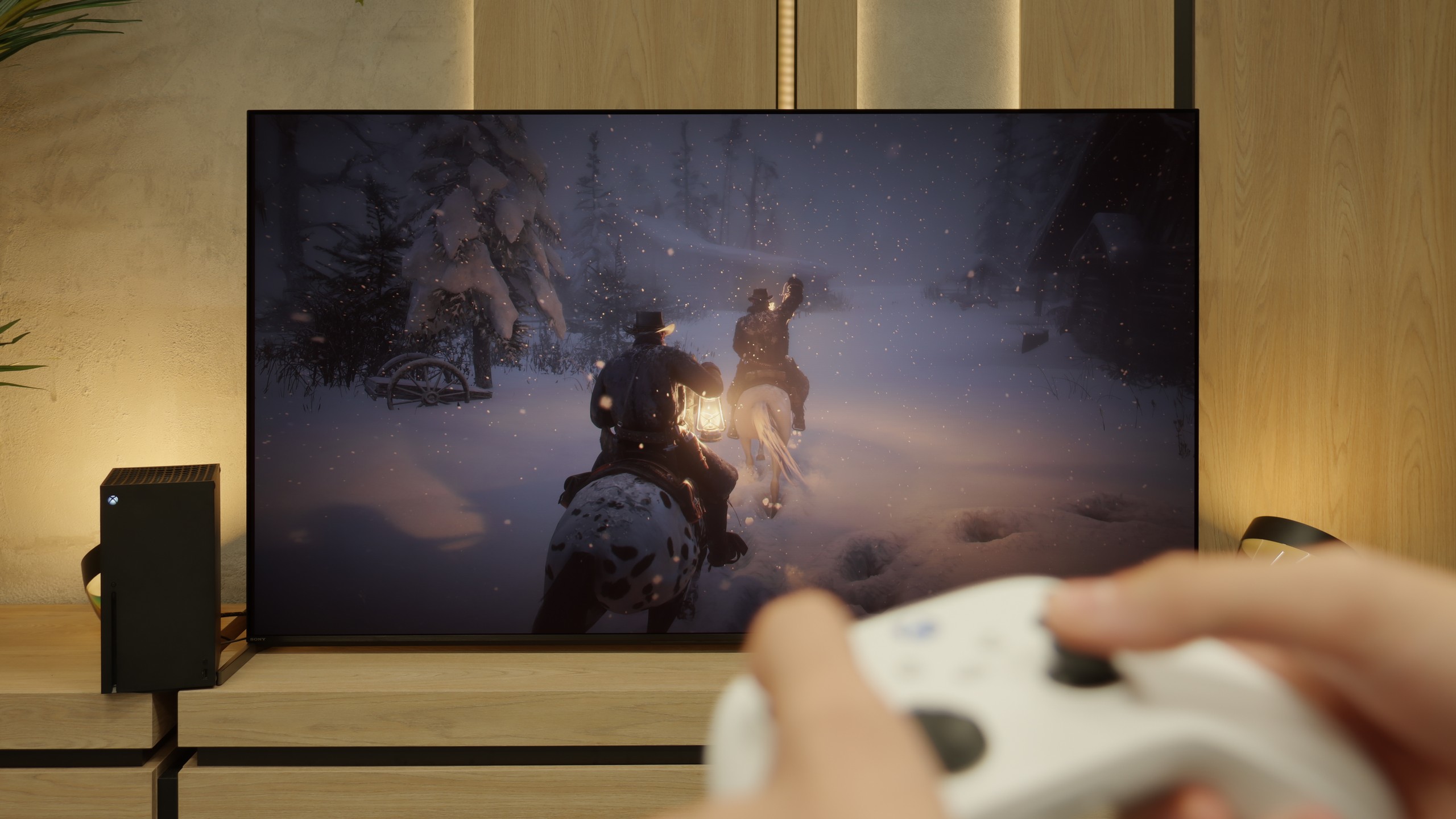

SONY Bravia 8 II - Input lag
9.8/10
Input lag in the Bravia 8 II is a strong point that every gamer will appreciate. With 120 Hz content, the values hover around 10 ms, putting this TV at the top of its class – the response is almost instantaneous, and controls in dynamic games remain fully predictable. At 60 Hz, the lag time naturally doubles, but it still stays at a level that can be described as exemplary. Importantly, Sony has done a great job with the support of Dolby Vision in games – it works here exceptionally smoothly and quickly. This is a significant change compared to previous years when Dolby Vision Gaming in TVs from this brand could cause additional delays or minor issues with smoothness. It’s clear that the manufacturer has refined this element to perfection.
| SDR | HDR | Dolby Vision |
|---|---|---|
| 1080p60: 19 ms | 2160p60: 18 ms | 2160p60 DV: 19 ms |
| 1080p120: 10 ms | 2160p120: 9 ms | 2160p120 DV: 10 ms |
| 2160p60: 19 ms | ||
| 2160p120: 10 ms |

SONY Bravia 8 II - Compatibility with PC
7.6/10
Chroma 444 (maximum resolution and refresh rate): Yes
Font clarity: Good
Readability of dark text and shapes: Very Good
Input lag in PC mode (4K, maximum refresh rate): 10ms
Matrix subpixel arrangement: RGB
Max refresh rate: 120Hz
G-Sync: Yes
Compared to last year's A95L, Bravia 8 II has made a significant leap forward in terms of compatibility with PCs. The support for chroma 4:4:4 works flawlessly, so text—both regular and very small—remains sharp and clear. This means that working with documents, spreadsheets, or even editing photos does not strain the eyes and does not require gymnastics with the settings.
However, there is a sense of incompleteness. One could expect an additional gaming mode with a refresh rate above 120 Hz in a TV of this class. After all, in the price segment this model is in (and even in lower ones), 165 Hz and even 240 Hz are becoming more common. Here such an option is lacking, which may be a slight disappointment for some PC enthusiasts. Fortunately, thanks to the low input lag and G-Sync support, Bravia 8 II still manages to immerse in PC gaming without feelings of delay or screen tearing. It's equipment that performs well not only in the living room but also on a gamer's desk.
SONY Bravia 8 II - Viewing angles
9.8/10
Brightness drop at an angle of 45 degrees: 11%
In this regard, the Bravia 8 II is at the absolute forefront of the market. Thanks to the use of a QD-OLED panel, the television maintains full color depth and high contrast even when viewed from a steep angle. This is a clear advantage over constructions based on WOLED panels, which can slightly lose saturation and detail at more extreme viewer positions. Like its competitor, the Samsung S95F, the Bravia 8 II model performs almost flawlessly in this category – regardless of whether we are watching a movie from the sofa, an adjacent chair, or standing in the corner of the room, the picture remains true to the original.
SONY Bravia 8 II - Daytime performance
5.6/10

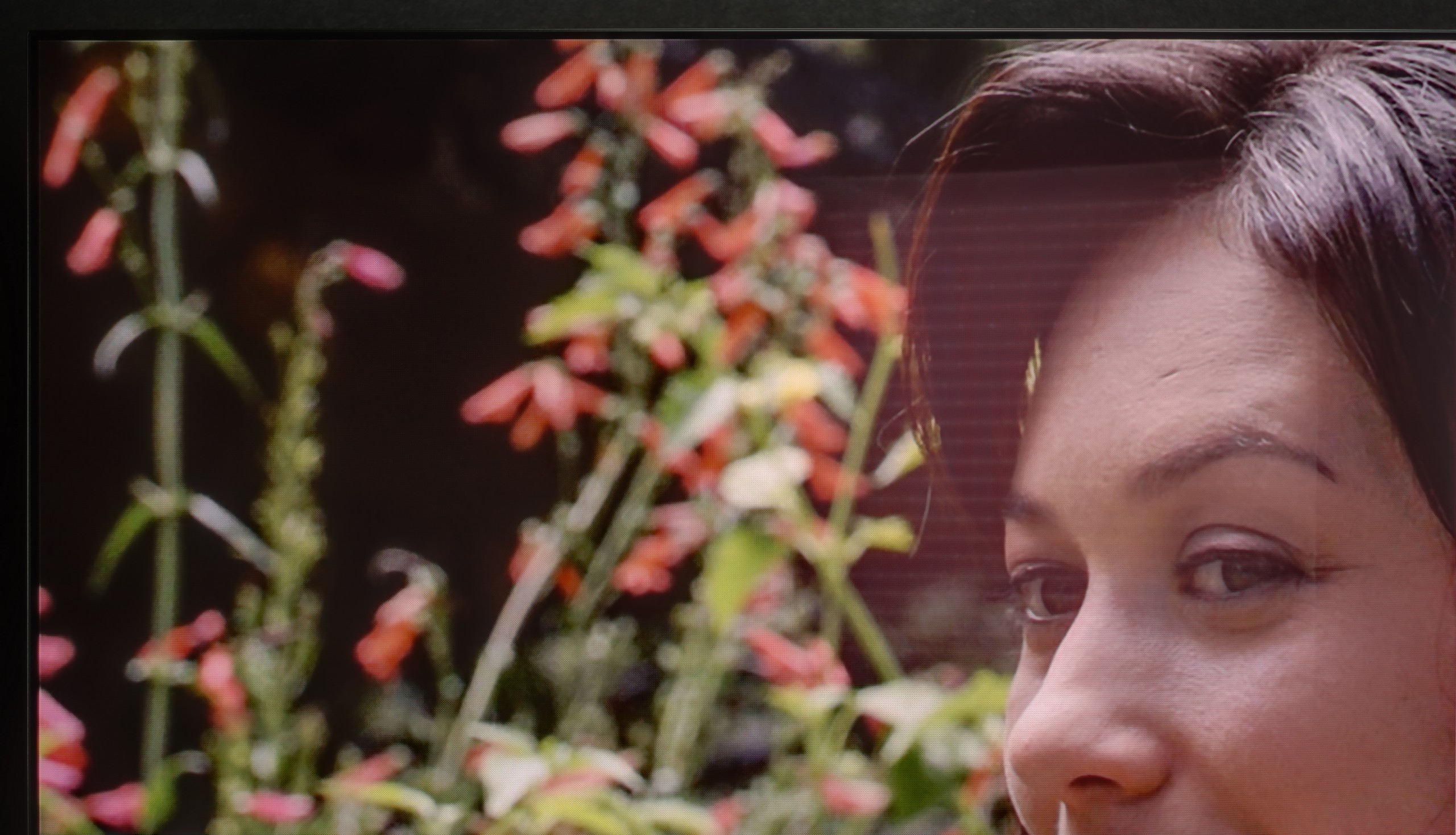
Panel finish: Glare
Reflection suppression: Good
Black levels during daytime: Average
For a television of this class, we expected better performance. An average SDR brightness of around 400 nits is definitely too low to speak of great visibility in a sunlit living room. In very demanding lighting conditions, we will be forced to reach for curtains or… move the television to another location. As with every QD-OLED panel, the black level during the day is not perfectly black—it takes on a slightly cherry hue. Fortunately, this technology also has its advantages over WOLED panels – it significantly better suppresses reflections, making direct light reflections less bothersome. Despite this advantage, in the overall assessment, the performance of the Bravia 8 II in a bright room should be rated as average, especially considering the high-class equipment to which this model belongs.
Panel brightness
Average luminance SDR
Sony Bravia 8 MK2: 419 cd/m2
SONY Bravia 8 II - TV features
8.9/10
System: Google TV
System performance: Good
- HDMI inputs: 2 x HDMI 2.0, 2 x HDMI 2.1 48Gbps
- Outputs: Toslink (Optical audio), eARC (HDMI), ARC (HDMI)
- Network Interfaces: Wi-Fi 2.4GHz, Wi-Fi 5GHz, Ethernet (LAN) 100Mbps
- TV reception: DVB-T, DVB-T2, DVB-S, DVB-S2, DVB-C
Classic features:
Recording to USB (terrestrial TV): Yes
Recording programming: Yes
Picture in Picture (PiP): No
RF remote control (no need to aim at the screen): RF
Backlit remote control: No
Teletext: Yes
Audio only mode: Yes
Bluetooth headphones support: Yes
Simultaneous Bluetooth headphones & TV audio: Yes
Smart features:
AirPlay: Yes
Screen mirroring (Windows Miracast): Yes
Voice search: Yes
Voice search in native language: Yes
Ability to connect a keyboard and mouse: Yes








SONY Bravia 8 II – Television Features
Bravia 8 II really has a lot to offer to those who use a television in a traditional way. The set includes two remotes – one modern, minimalist "smart" remote and the other, a traditional numeric remote, designed for those who simply view the television as… just a television 😉. Sony also allows programming and recording TV shows to external storage, such as a USB drive. Elements like EPG or teletext are hardly worth mentioning – they are obvious.
SONY Bravia 8 II – GoogleTV
When it comes to smart features, the biggest advantage is the Google TV system, which we believe Sony has refined the best on the market among all manufacturers. Although the system can be demanding in terms of hardware, it runs very smoothly on the Bravia 8 II. Google TV also offers a vast selection of applications, which is another strong point. There are also exclusive features that are hard to find in the competition – including the ability to play remotely on your own PlayStation console or access to the private movie library Bravia Core, available exclusively on Sony televisions. In short – a full package of possibilities.
Sound connection options
HDMI audio:
Other audio outputs:
Toslink: Yes
Wireless audio:
Bluetooth: Yes
Supported audio formats (external HDMI eARC audio):
Dolby Digital Plus 7.1: Yes
Dolby True HD 7.1: No
Dolby Atmos in Dolby Digital Plus (JOC): Yes
Dolby Atmos in Dolby True HD: No
DTS:X in DTS-HD MA: Yes
DTS-HD Master Audio: Yes
Senior accessibility
Numeric keyboard on TV: Yes
Font size adjustment: No
Audio description: Yes
SONY Bravia 8 II - Apps
9.6/10























SONY Bravia 8 II - Playing files from USB
8.9/10

| Maximum photo resolution: | Supported photo formats: |
|---|---|
Bravia 8 II handles multimedia playback very well – the built-in player opens practically everything you can expect. Yes, there are a few formats that it cannot handle, but this is not a serious issue. The biggest advantage is the fact that thanks to the Google TV system, we are not limited solely to the default player. At any time, we can install an alternative application that can manage files that the built-in Sony software struggles with. This makes the television a universal multimedia center, capable of handling almost any format.
SONY Bravia 8 II - Sound
8.5/10
86dB
Maximum volume
Supported codecs
(TV speakers)
Dolby Digital Plus 7.1
Dolby True HD 7.1
Dolby Atmos in Dolby Digital Plus (JOC)
Dolby Atmos in Dolby True HD
DTS:X in DTS-HD MA
DTS-HD Master Audio
In terms of sound, the Bravia 8 II is absolute top-tier in the world of televisions. Sony once again proves that their Acoustic Surface technology is not just a marketing gimmick, but a real advantage – the speakers hidden behind the screen make the entire panel act as a diaphragm. The soundstage is wide, dialogues sound exceptionally clear, and the sound follows the action on the screen precisely. It’s one of the few televisions for which you can really skip getting an additional soundbar. (Of course, the basic one). Additionally, Sony hasn’t forgotten about formats that competitors are slowly disregarding – full DTS support is a nod to movie lovers who want to extract the maximum experience from films and series recorded on physical media.
Sound Quality Test:
Acoustic Measurements
86dBC (Max)
75dBC
SONY Bravia 8 II - Panel details
Software version during testing: 112.632.050.1EUA
Image processor: MT5897 6GB RAM
Subpixel Structure:
Panel uniformity and thermal imaging:

Founder and originator of the "ChooseTV" portal

Journalist, reviewer, and columnist for the "ChooseTV" portal
See articles related to Sony Bravia 8 MK2:
10/16/2025







